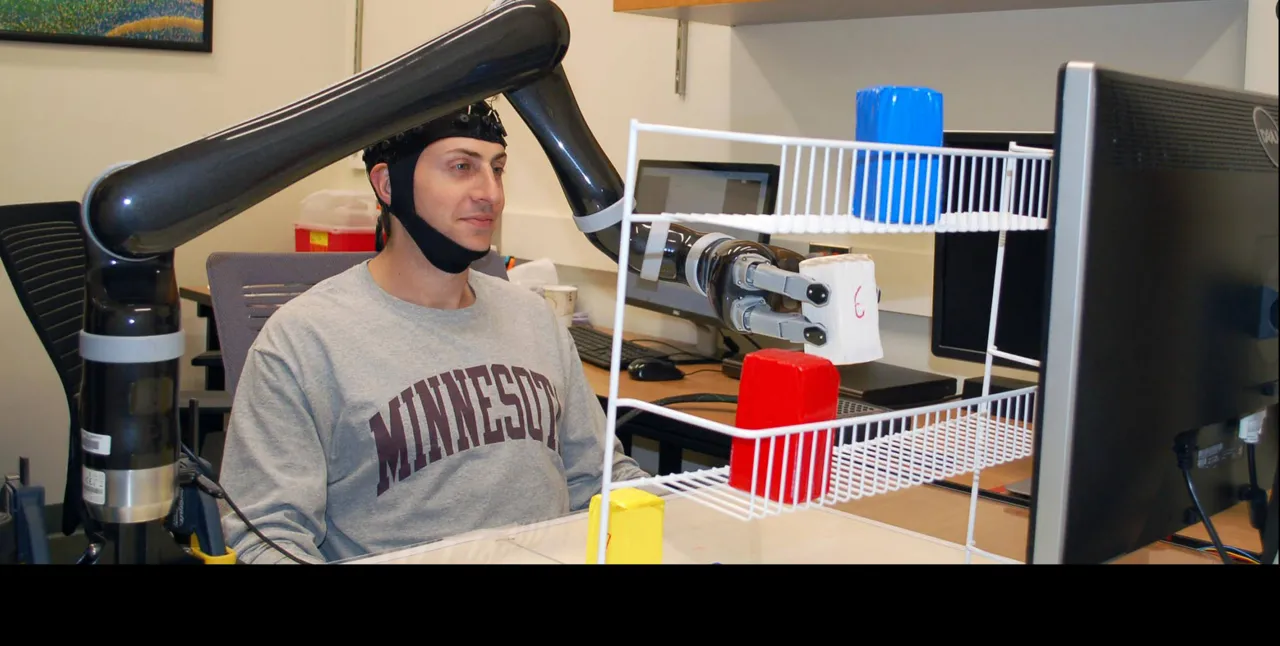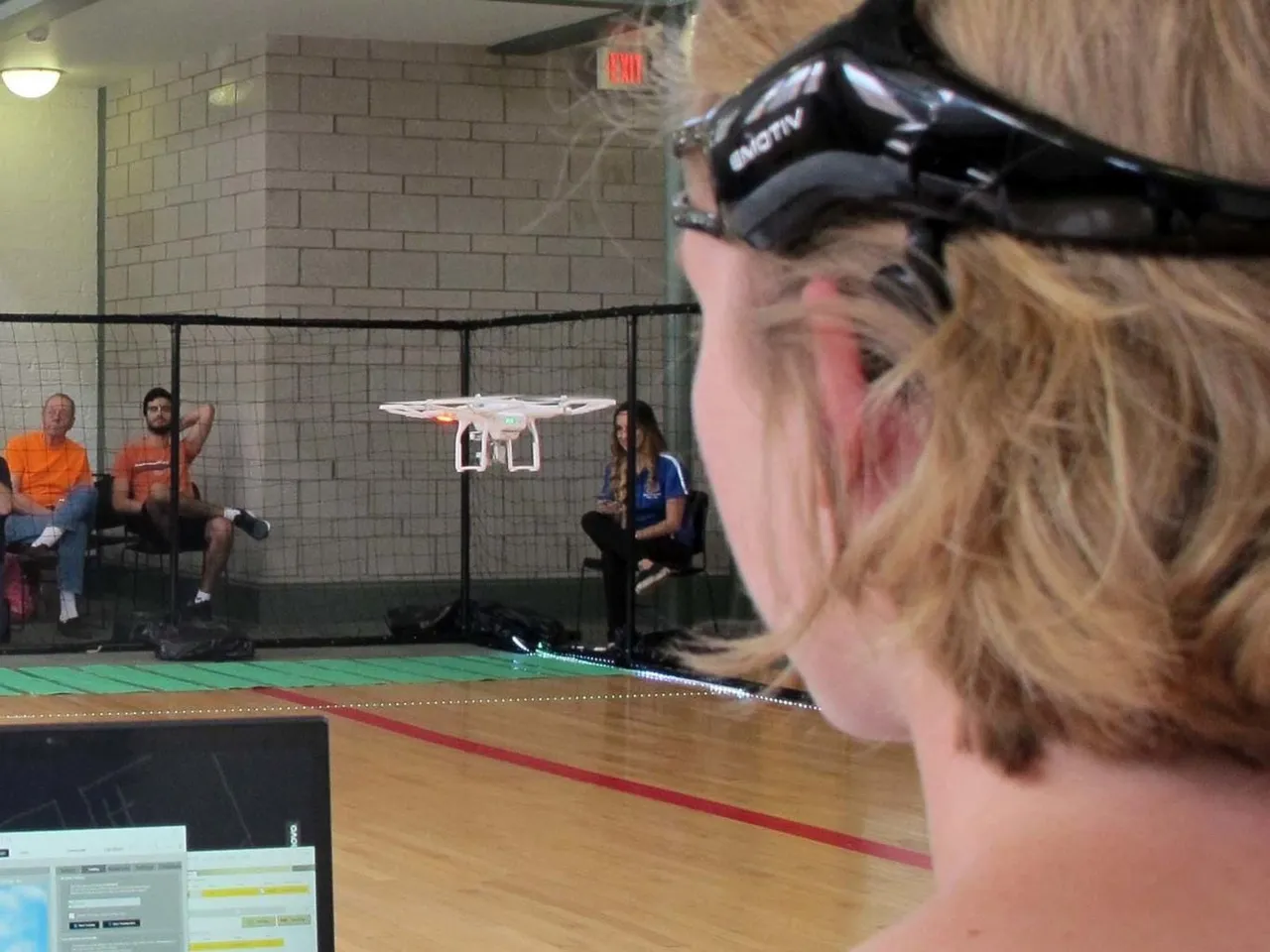
Researchers at the University of Minnesota were recently able to successfully move a robot arm using only their thoughts, thanks to a noninvasive brain cap. The research looks promising as far as advancing applications that might be able to help individuals who are disabled and more.
The research study involved volunteers who agreed to participate in steering a robot arm by only using their mind.
The thoughts that the participants were thinking, were then picked up by a noninvasive head-covering brain cap. The cap was fitted with 64 electrodes and they analyzed the brain activity of the participant.
At the same University only a few years ago, researchers also were able to do something similar when they engaged in a study that had participants fly a drone by using nothing other than their own thoughts. (see image below)

Our lives seem to be more reliant every day on internet-enabled devices and connections, for business, entertainment, and more, and some have suggested that we could see these mind-controlled robotic devices greatly expand in the near future.
They might eventually become so prevalent that we see everyone using and wearing them in the same way that we see them use a watch or a cellphone.
But the most exciting application might be in the ability to help the many disabled people around the world who would greatly value the chance to regain some movement for themselves.

The robot arm relies on electroencephalography for its commands.
In other words, the brain-cap detects and measures the brain waves of the individual and that is how it can tell what it needs to do. This is a great improvement from traditional methods which would require invasive brain implants into paralyzed subjects.
This present study had included 8 volunteers and they started out by first familiarizing themselves with moving a cursor on a computer screen, and they then progressed to moving the arm. Researchers say that the participants achieved a success rate for moving the arm of more than 80 percent when they tried to pick up objects, and around 70 percent success when they tried to move objects to a higher shelf.
Photo:
College of Science and Engineering
Jason Dearen/AP
Pixabay
Sources:
http://www.wsj.com/articles/moving-robots-with-just-a-thought-1482424362
http://www.independent.co.uk/news/science/drones-brain-thoughts-controlled-bci-brain-computer-interface-brain-controlled-interface-a6996781.html